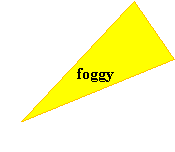Конспект майстер - класу "Ways of motivating pupils"
Ways of motivating pupils.
(Slide 1) Dear colleges! Welcome to my lesson! I would like to introduce my ways of motivating pupils. I must say that importance of learning English has increased in the modern world. The main purpose of studying English is a formation of pupils’ communicative competence. The essential element on the way to success in learning foreign languages is pupils’ desire to learn a language that is a high motivation to the study.
(Slide 2) Ever Garrison said: “A teacher is a compass that activates the magnets of curiosity, knowledge, and wisdom in the pupils.” The pupils’ cognitive activity is an index of quality their studying work which directs to the effective getting of knowledge and ways of activity. So I try to find methods which instigate a pupil to the active work and let him to receive a satisfaction from the studying process.
(Slide 3) I consider the most effective ways of activization pupils’ cognitive activity on the English lessons are:
● creation of benevolent atmosphere;
● leading of non – standard lessons;
● introduction of interactive methods;
● using of multimedia technologies;
● choice of studying materials according to pupils’ interests.
(Slide 4) One of the most difficult and important aspects of teaching process is how to motivate our pupils. Actuality of motivation is composed in arousing the interest and enthusiasm of learners, inspiring schoolchildren in learning and improving English, looking for new ways and methods of stimulation cognitive activity. No doubt that the job of the teacher to keep them motivated and to ensure opportunities for pupils’ success.
(Slide 5) “Motivation is one of those ideas like justice or world peace: we all know it’s a good thing but it’s not clear how to get there,” said Tom Ward, a free – lance teacher trainer.
Motivation is the driving (internal or external) force that stimulates desire and willingness in pupils to do something with enthusiasm, to be continually interested in a subject, or to make an effort in order to attain a goal.
According to different definitions motivation is psychological feature (inner state) that arouses an individual to act towards a desired goal: it elicits, controls and sustains certain goal – directed behavior.
“Desire is the key to motivation,” said Mario Andretti. It’s the process whereby goal – directed activity is instigated and sustained. During my teaching career I’ve come to the conclusion if pupils are well motivated they are eager to learn more and more. In my opinion in order to get this aim a teacher and a pupil should realize the matter why to teach and why to learn. I think goals are related to who we want to be. Therefore it’s important to set and sustain certain goals, to make program in achieving them and to use challenging material. So, without aim it’s impossible to understand the meaning of motivation or to get to motivation. If the teacher looks for the effective ways in teaching English, he himself will be motivated and can motivate the learners. Frankly speaking, motivated pupils are more excited to learn and participate. I believe that motivation is the key to successful language learning.
(Slide 6) Speaking about learner’s motivation I should mention that the secret of good motivation is planning. Remember the old saying: “If you fail to plan, you should plan for failure.” When I am planning, I think about what my young learners will be interested in doing. We need to understand and accept how quickly our young learners will lose interest in what they are doing and how easily they may become distracted.
Among the variety ways of motivation I’d like to point out the following effective ones to get my pupils excited about learning. In my work I use such top motivating strategies:
1) plan for the pupils’ activities;
2) plan for an average of 5 minutes for each activity;
3) remember that children can’t sit still being passive for more than two or three minutes;
4) activities where children are actively involved can be longer than five minutes;
5) remember to balance individual, pair small group and whole class activities. Children need to learn to operate in many different social situations.
6) finally, plan for time. Remember that is a large class, distributing papers, cards, coloured pencils or books takes time.
 (Slide 7) I would like to propose some strategies to increase motivation on the interactive lessons. The following tips on how to study effectively will help pupils to be motivated:
(Slide 7) I would like to propose some strategies to increase motivation on the interactive lessons. The following tips on how to study effectively will help pupils to be motivated:








1. Set your personal goal.
2. Think positively.
3. Reward yourself.
4. Develop a true interest to the subject.
5. Enjoy our every lesson.
6. Try to remember a material of the lesson.
7. Believe you can do everything.
8. You are the best pupil in the world!
(Slide 8) I would like to propose you some tasks from my working experience. At first I suppose an interactive exercise “A suit – case.” It is used for organization of speaking with a purpose to receive pupils’ feed – back. Look at this magic box and answer my question:
- What valuable can I take from this lesson?
Now watch this video, please. During watching it try to answer my question: “What is this video about?”
- Did you like to watch this video?
- Can you share your opinions?
- Do you remember what animals and birds you can see in this film? (Seagulls, a koala, horses, a marmot, seals, albatroses, gannets, sea - dogs)
- When can we use this video on our lessons?
- What is the main topic of proposed video? Good!
Of course this video shows us a beauty of wild life and nature. Today we are going to work on the topic “Nature”. We will use methods which instigate to the active work and let us receive a satisfaction from the studying process.
(Slide 9) All the same, nature surrounded us. Nature is everything that surrounds us: water to drink, air to breath, earth to live. Write me your associations to this word. Look at this “association bush” and complete it with the appropriate words. Read your variants. Good job!














(Slide 10) I must admit using of interactive technology “association bush” can develops logical thinking, imagination and memory.
(Slide 11) Nature presents us with fresh air, crystal water, unique conditions for living and nice weather. You must remember what kind of weather do you know? Look at the mind – map. With a help of interactive exercise “Microphone” name your variant of pronunciation drill. Try to say words with the ending – y.












(Slide 12) Excellent! An interactive technology of “mind – map” is my favourite component of English lesson. I use many different forms and variants of mind – map in my works. It can help to stir up pupils’ memory, thinking, knowledge and skills. The pupils can create your own forms on the lesson or during presenting projects. Sometimes it was very interesting representations of butterflies, trees, cats or flowers. Of course, a form of mind – map is not a main principal. It is important to motivate pupils to learn English.
(Slide 13) Let’s continue. Nature gives enjoyment of blue lakes and rivers, green forests and meadows. Now I propose you to involve into the exercise “Ice – breaker”. You must write down the words, word – combinations or sentences which begin on the proposed letter, but they must characterize nature. Work in groups. You have 5 minutes.
![]() ature is beautiful in all the seasons.
ature is beautiful in all the seasons.
![]()
ir is always fresh in the forests .
![]()
ogether we can save our nature.
![]()
nique nature of Africa is well – known all over the world.
![]()
ainforests are found in the tropics.
![]()
nvironment is the air, water and the land where people, animals and plants live.
(Slide 15) Are you ready? Read your variants, please. Great! I must admit an interactive method of “ice – breaker” assists to a creation of atmosphere co – operation, interaction, development of communicative skills.
I want to continue our work. We know nature gives us enjoyment of parks and squares, flowers growing in the fields and gardens. “Each flower is a soul opening out to nature,” said Gerald de Nerwal. I can use many crosswords during my lessons. I like to propose my pupils to solve crosswords of different forms.
![]() (Slide 16) Look at this crossword and try to find the names of flowers in it.
(Slide 16) Look at this crossword and try to find the names of flowers in it.




![]()
![]()
![]()
![]()
![]()
![]()
![]()
![]()
![]()
![]()
![]()
![]()
![]()
![]()
![]()
![]()
![]()
![]()
![]()
![]()
![]()
![]()
![]()
![]()
![]()
![]()
![]()
![]()
![]()
![]()
![]()
![]()
![]()
![]()
![]()
![]()
![]()
![]()
![]()
![]()
![]()
![]()
![]()
(Slide 17) Are you ready? Please, read your variants. Key: crocus, lily, rose, lilac, violet, aster, tulip, daisy. Nice work!
![]()




![]()
![]()
![]()
![]()
![]()
![]()
![]()
![]()
![]()
![]()
![]()
![]()
![]()
![]()
![]()
![]()
![]()
![]()
![]()
![]()
![]()
![]()
![]()
![]()
![]()
![]()
![]()
![]()
![]()
![]()
![]()
![]()
![]()
![]()
![]()
![]()
![]()
![]()
![]()
![]()
![]()
![]()
![]()
(Slide 18) Now I propose to continue our work. To your opinion I introduce some simple, but interesting method of pupils’ working in groups. It can make more active pupils on the lesson. You have some parts of cutting sentence. Your task is to make up these parts into the logical order and write them down.
![]()
![]()
![]()
![]()
![]()
![]()
![]()
Key: Nature is everything in the world that is not made or caused by humans, for example, animals, plants and the weather.
(Slide 19) At the end of the lessons I often use an interactive technology “The tree of decision.” This exercise is necessary to sum up the lesson. Look at this tree. Let us remember what have we done on our today’s lesson?
“The tree of decision.”











- Have you any questions to me?
Thank you very much for your work. I’m proud of you!
(Slide 20) Our meeting is over. I want you to be happy!

про публікацію авторської розробки
Додати розробку
